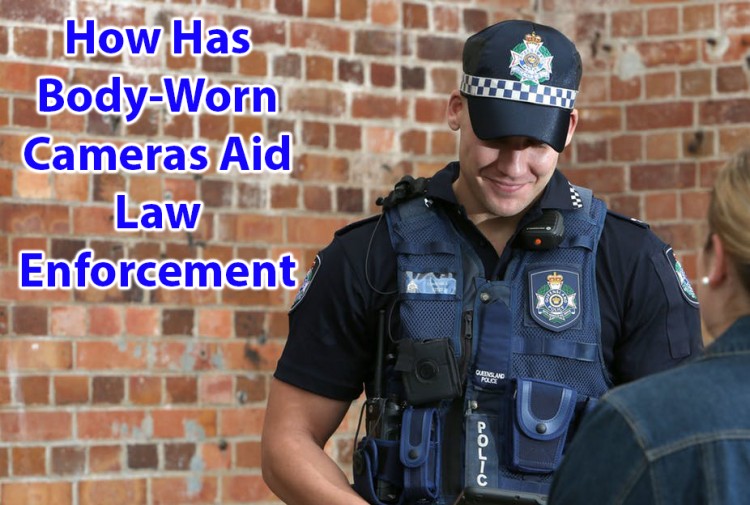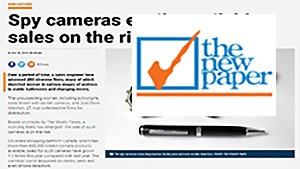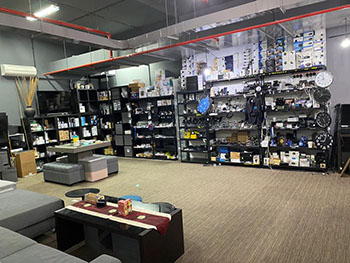How has body-worn cameras aid law enforcement?

Body-worn cameras have been viewed as one way to address challenges and improve law enforcement practice more generally. The technology, which can be mounted on an officer’s eyeglasses or chest area, offers real-time information when used by officers on patrol or other assignments that bring them into contact with members of the community. Another benefit of body-worn cameras is their ability to provide law enforcement with a surveillance tool to promote an officer’s safety and efficiency and it also prevents crime.
“Law enforcement agencies across the United States and throughout the world are using body-worn cameras (BWCs) as a promising tool to improve evidentiary outcomes, and enhance the safety of, and improve interactions between, officers and the public. BWCs are also proving to be an important tool to assist broader law enforcement, problem-solving, and community engagement strategies within jurisdictions.” says the Bureau of Justice Assistance.
Rapid use of body-worn cameras has been observed in the last decade in the US. Members of the general public continue to embrace technology. Current studies suggest that body-worn cameras offer benefits for law enforcement, but additional research is needed to more fully understand the value of the technology for the field. In this article, it is elaborated how body-worn cameras aid law enforcement.
Benefits of Body-Worn Cameras
The adoption and deployment of body-worn cameras have provided law enforcement agencies a great help. Some major benefits of using this technology are:
- Increase public confidence regarding local police
- Less number of complaints are registered against police officers or other law enforcement agent
- Early Guilty Pleas due to strong graphical evidence
- Reduction in assaults on police officers
- BWC (Body Worn Cameras) cover those areas where CCTV are not placed
- Officers skills enhancement after reviewing how they were in the field.
The body-worn cameras have many benefits that are fully cherished by both public and police officers resulting in a better law and order environment.
Indisputable evidence:
One of the main advantages of Body Worn Cameras is that they provide enough evidence that can be held as indisputable evidence in court and helps better prosecution. For gathering such kind of evidence certain types of protocols are maintained:
- Use of encrypted devices
- No deletion and editing features are available in these cams
- Auto deletion of footage after 31 days
- Ability to store required footage
- Full audit trail
Better transparency:
Body-worn cameras may result in better transparency and accountability and thus aids and improve law enforcement. It is seen that in many communities there is a lack of trust between locals and law enforcement agencies. This lack of trust is aggravated when there are questions regarding the use of deadly or less-lethal force. Video footage captured during these officer-community interactions might provide better documentation to help confirm the nature of events and support accounts articulated by officers and community residents.
Increased civility:
It is seen that citizens have been more amenable to officer’s commands during encounters. Citizens often change their behavior when they know that they are being recorded. It aids law enforcement in such a way that low-level encounters are settled easily rather than escalating to a kind where the use of force becomes necessary.
After all, we know that other cameras do change behavior. Public closed-circuit TV cameras seem to lead to a moderate decrease in crime, particularly in parking garages. Traffic cameras significantly decrease speeding and fatal accidents.
Even the suggestion that someone is watching us tends to influence us. In 2011, researchers at Newcastle University in England posted pictures of a pair of male eyes and the caption,
“Cycle Thieves: We Are Watching You.”
Bike thefts decreased by 62 percent in those locations — and not elsewhere.
Improve skills:
The use of body-worn cameras also offers potential opportunities to advance policing through training. Law enforcement trainers and executives can use the footage to give an experience close to real-world encounters. They can analyze officer activities and behaviors captured by body-worn cams. It helps advance professionalism among officers and recruits. They would know what possible things can go wrong in public and how to avoid it.
Implementation of new better strategies:
The video footage caught on a body-worn camera can provide law enforcement executives enough data to enforce new strategies that are best integrated to gain more public trust as well as better law enforcement in that community.
Fast and better results:
Body-worn cameras accelerate the resolution rate of cases in which excessive use of force or misconduct by a law enforcement agent is alleged. Investigations of cases that involve inconsistent accounts of the encounter from officers and citizens are often found to be “not sustained” and are subsequently closed when there is no video footage nor independent or corroborating witnesses. This, in turn, can decrease the public’s trust and confidence in law enforcement and increase perceptions that claims of abuse brought against officers will not be properly addressed. Video captured by body-worn cameras may help corroborate the facts of the encounter and result in a quicker resolution.
Boosts up the officer’s confidence:
Alongside the organizational value of the cameras, the officers themselves have also experienced a positive outcome from wearing body-worn cameras with 93% of officers believing body cameras help with evidence gathering and 80% of officers feeling body-worn cameras should be compulsory.
Fewer complaints filed against officers:
A significant decrease is observed in complains filed against officers who were equipped with body-worn cameras. The number of complaints filed against officers dropped from 0.7 complaints per 1,000 contacts to 0.07 per 1,000 contacts said in publishing.
Conclusion:
While all of the above highlights many of the positives of using body-worn cameras for policing and law enforcement applications, the cameras themselves should not be considered a ‘magic bullet’. Body-worn cameras are one of many tools that can be employed with a modern policing framework to improve effectiveness and safety.








